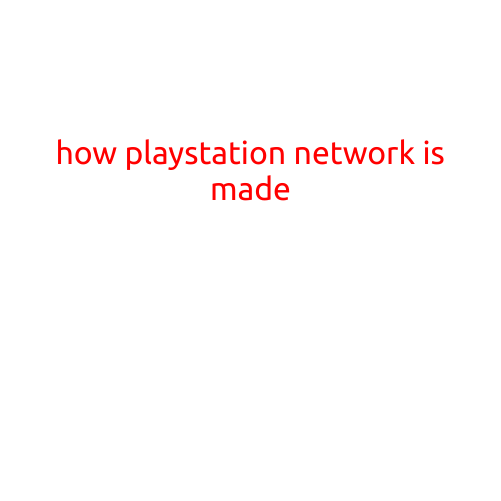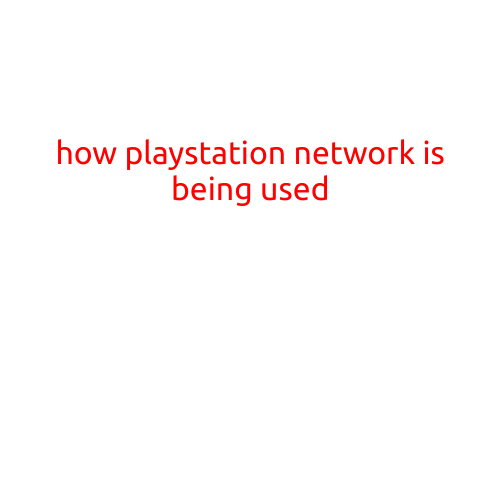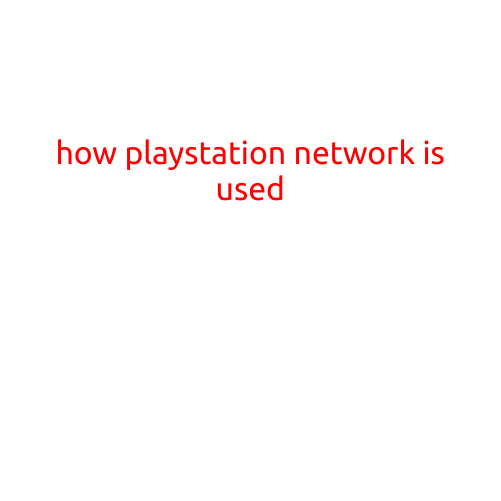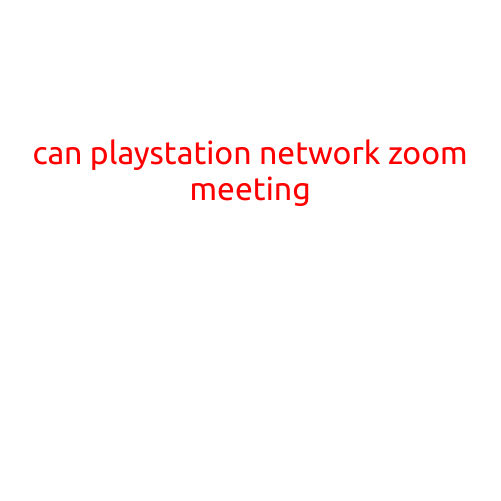
How PlayStation Network is Made: A Behind-the-Scenes Look at Sony’s Iconic Online Gaming Platform
The PlayStation Network (PSN) is a crucial component of the gaming experience for millions of PlayStation enthusiasts around the world. As an online gaming platform, PSN enables seamless connectivity between gamers, allowing them to play their favorite games with friends, download new content, and access a vast library of games and entertainment media. But have you ever wondered how PSN is made? In this article, we’ll take a peek behind the scenes to explore the making of PSN, from concept to deployment.
Design and Planning
The development of PSN begins with a clear vision and planning phase. Sony’s game development team, led by the PlayStation Network Operations team, outlines the key features, performance standards, and user experience requirements for the service. This involves identifying the target audience, assessing the gaming landscape, and understanding the competitive landscape.
Content Delivery Network (CDN)
To ensure fast and reliable data transfer, PSN utilizes a Content Delivery Network (CDN). A CDN is a network of distributed servers that store and deliver content across the globe, reducing latency and improving the overall gaming experience. Sony partners with renowned CDN providers to ensure that the PSN infrastructure can handle the massive amounts of data transferred every day.
Server Architecture
At the heart of PSN lies a robust server architecture, designed to handle massive traffic volumes and support the growing user base. Sony uses a combination of custom-built servers and off-the-shelf hardware to create a scalable and fault-tolerant infrastructure. This includes:
- App Server: Responsible for handling game traffic, authentication, and authorization.
- Storage Server: Manages game data, user profiles, and other critical information.
- Database Server: Maintains a vast repository of user data, game metadata, and more.
- Load Balancer: Distributes traffic across multiple servers to ensure optimal performance.
Network Infrastructure
PSN relies on a robust network infrastructure to connect servers, data centers, and users worldwide. Sony utilizes a mix of fiber-optic cables, high-speed internet connections, and strategically located data centers to ensure:
- Low latency: Enables quick response times and seamless online gaming.
- Reliability: Ensures that the service remains available and accessible 24⁄7.
- Scalability: Supports the growing user base and increasing data transfer demands.
Security Measures
PSN prioritizes security to protect users’ sensitive data and prevent hacking attempts. Sony employs various security measures, including:
- Encryption: Encrypts user data, passwords, and game traffic to prevent unauthorized access.
- Firewalls: Blocks malicious traffic and limits access to specific services.
- Regular Security Audits: Conducts regular security assessments and penetration tests to identify vulnerabilities.
Deployment and Testing
Once the PSN infrastructure is built and tested, it’s time for deployment. Sony’s deployment team, in collaboration with the development team, ensures a smooth transition to the new infrastructure. This involves:
- Phased Rollout: Gradually introduces new features and services to minimize disruptions.
- Thorough Testing: Conducts extensive testing to identify and fix issues before launch.
- Continuous Monitoring: Monitors the service closely after deployment, addressing any issues that arise.
Conclusion
The PlayStation Network is a complex, robust, and highly secure online gaming platform, built to provide an exceptional gaming experience for millions of users worldwide. From design and planning to deployment and testing, Sony’s game development team, in collaboration with industry experts, has worked tirelessly to create an infrastructure that can handle the demands of modern online gaming.





